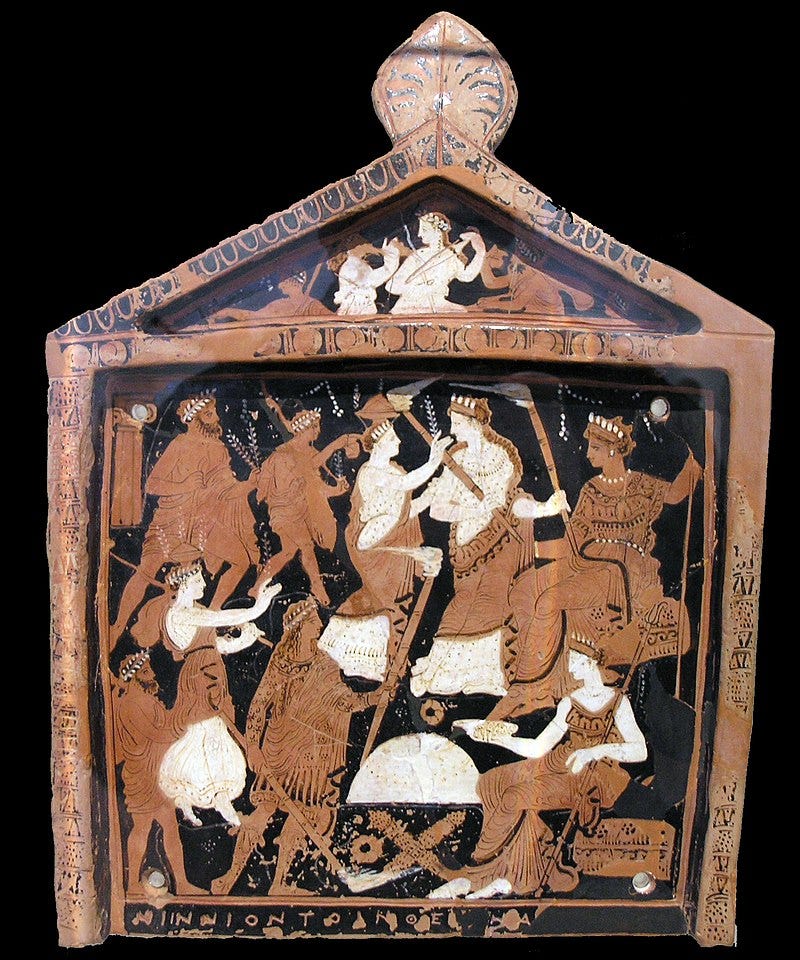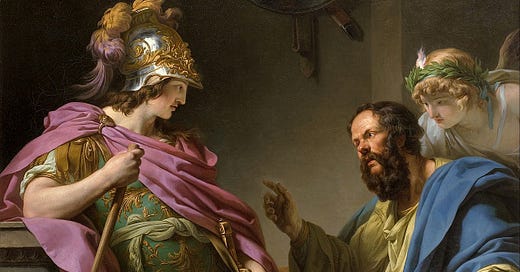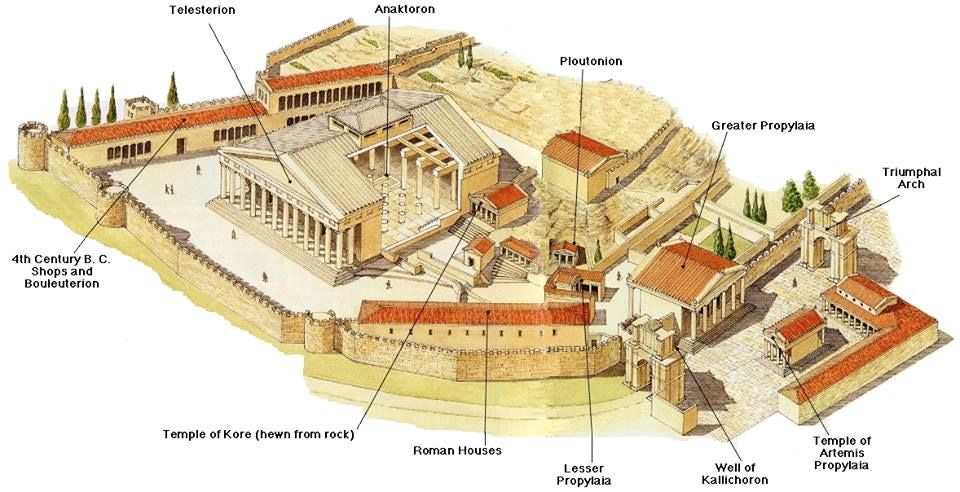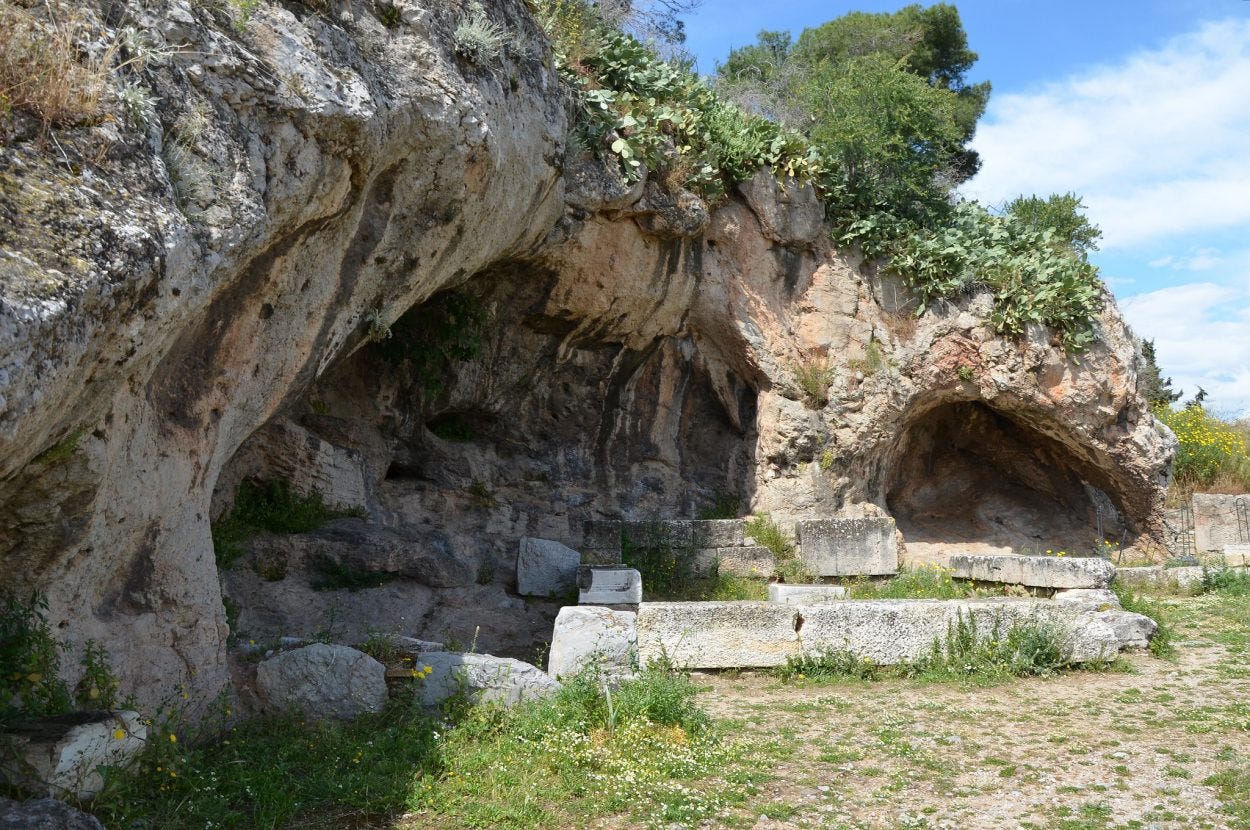It may be a shock to many, that what started as an agrarian cult to the goddess Demeter in a small rural town near Athens would not only persist for two thousand years after its beginnings but would boast some of the most powerful men the world would ever see; from the mythical Hercules, to the genius of Plato and Socrates, as well as Roman Emperors such as Augustus and Hadrian, among others.
The conductors of these mysteries held some of the highest prestige one could hold in the ancient world, with one priestess of the mysteries having boasted about being the one to crown both Marcus Aurelius and Commodus during her tenure.
While the conductors of the mysteries undoubtedly held prestige, and even widespread fame, the secrets the mysteries held were closely guarded, and anyone who revealed the secret rites of the cult was subject to severe punishment, up to and including death.
In one instance, Alcibiades, who came to fame due to his successes as a general during the Peloponnesian War, was alleged to have imitated some parts of the ritual and was eventually tried in Athens in absentia, leading to his property being confiscated and him being sentenced to death.
While Alcibiades would eventually clear his name (for the most part), the mere allegations of him not dutifully keeping the secrets of the cult were enough to force him to flee his own army and nation lest he be killed.
Initiation into the Cult
The mysteries did not discriminate based on sex, as both men and women could become initiated into the cult. Initially, only Eleusinians, and later Athenians, could be initiated, but later all Greeks, and subsequently Romans, could join (for a brief period people of “barbarian nations” were allowed before being banned from the cult).
The cult was not without requirements, though, and to be eligible for initiation, one had to be able to speak Greek and could not be guilty of homicide, although those with such charges typically wouldn't have been permitted to even attempt to begin the prerequisites for initiation by the Archon of Athens. Would-be initiates would then be judged on their physical and mental fitness to ensure they had the faculties to be introduced to the mysteries.
"Everyone who has clean hands and intelligible speech, he who is pure from all pollution and whose soul is conscious of no evil and who has lived well and justly may proceed, all others should abstain” -non ver batim statement given to would-be initiates, pieced together from sources from Aristophanes, Theo Smyrnaios, Seutonius, Libanius, and Celsus.
While the mysteries may be thought of as a whole, it is generally recognized that there were two “segments” of the mysteries, the lesser and the great, whose rituals differed but were still generally seen as parts of a greater whole.
The lesser mysteries were more or less a ritual purification to prepare themselves for what the cult believed was a divine experience. Initiates would conduct a self-baptism of sorts in the river Illisos — along with a piglet which would then be sacrificed to the gods. It is at this point in which the participants were officially mystai — or initiates and prepared for the greater mysteries through the help of a sponsor from the cult.
The Archon Basileus of Athens would lead the congregation in a series of further sacrifices, prayers, and preparations before the procession would then travel from Athens to Eleusis and as they did, they would sing, pray, and chant:
Come, arise, from sleep awaking,
Come the fiery torches shaking
Oh Iacchos, Oh Iacchos,
Morning Star that shinest nightly,
Lo, the mead is blazing brightly,
Age forgets its years and sadness,
Aged knees curvet for gladness,
Lift thy flashing torches o'er us,
Marshall all the blameless train,
Lead, Oh lead the way before us . . .
-Aristophanes, Frogs, vv. 340-350
This procession, referred to in academic circles as the pompe, seemed to have served as an important part of the ritual itself, although due to political circumstances, it occasionally had to be rerouted by way of the sea from Athens, but was typically undertaken on an established “sacred way” to Eleusis.
Only once was the pompe ever canceled after it had begun; which was when Alexander the Great had conquered and destroyed Thebes.
After the pompe’s arrival at Eleusis, the initiates would undertake a day of rest and then begin to fast (perhaps in reverence to the fasting of Demeter as she mourned Persephone) and were also instructed to not touch a dead body or a woman who had just given birth to a child.
The breaking of the fast is generally thought to have been done with the ingestion of a special drink kykeon, which some scholars believe to have been (at least originally) psychoactive. Kykeon is similar to the drink requested by the goddess Demeter in lieu of wine, in which water, meal, and mint were mixed for a drink. Such a drink appears frequently in Greek mythology and is often consumed in these stories by gods, demigods, and heroes.
Such a grain-based drink could have potentially been tainted with ergot — which is a psychoactive fungus that occurs primarily within grains — and excavations at an Eleusinian temple in Girona, Spain lends credence to this theory as traces of ergot were found within a vase as well as the teeth from the body of a 25-year-old man.
While there is no conclusive proof this was intentionally done, it certainly is interesting to wonder whether this cult could have used psychedelia to enhance its imagery and rites and to put its initiates into altered states of mind to truly accept their rituals and teachings.
Only after consuming the kykeon could the initiates enter the temple compound, and finally; the Telesterion (originally built by Iktinos, the architect of the Parthenon) by giving the password they had learned throughout their rituals and preparation:
"I have fasted, I have drunk the kykeon, I have taken from the kiste (box) and after working it have put it back in the calathus (open basket).”
The interior of the Telesterion was composed of two parts, the outer hall, in which the ceremonies of the greater mysteries took place, and the interior Anaktoron, in which only the Hierophant, the high priest, could enter and in which the sacred objects of the cult were stored.
While the absolute specifics of the greater mysteries are unknown, there are three generally accepted components:
Dromena: Things that were enacted
Deiknumena: Things that were Shown
Legomena: Things that were said.
The Dromena
The Dromena is believed to have been a reenactment of the myth of Demeter and Persephone, and perhaps one in which initiates took part. This reenactment certainly seems to have been far more than a play, but one in which the participants are meant to endure the suffering which was felt by Demeter as she searched for Persephone.
The soul, [at the point of death] has the same experience as those who are being initiated into great mysteries . . . at first one wanders and wearily hurries to and fro, and journeys with suspicion through the dark as one uninitiated: then come all the terrors before the final initiation, shuddering, trembling, sweating, amazement: then one is struck with a marvelous light, one is received into pure regions and meadows, with voices and dances and the majesty of holy sounds and shapes: among these he who has fulfilled initiation wanders free, and released and bearing his crown joins in the divine communion, and consorts with pure and holy men, beholding those who live here uninitiated, an uncleansed horde, trodden under foot of him and huddled together in mud and fog, abiding in their miseries through fear of death and mistrust of the blessings there." -Stobaios, IV, p. 107 (Meineke)
Perhaps the initiates wandered in the darkness of the night searching for Persephone, perhaps they visited the the mouth of the Ploutonion cave at Eleusis, where Hades was supposed to have carried Persephone off to the underworld through.
The Deiknumena and Legomena
Unfortunately, the Deiknuma and Legomena aspects of the mysteries are still an open question, although from ancient sources we can ascertain some understanding of their roles in the initiation into the greater mysteries.
We know that the Deiknumena were the so-called Hiera, from which the title of Hierophant is derived. Hierophant meaning “he who shows the Hiera,” which themselves were the sacred objects of the rituals stored in the Anakoron.
These objects would be retrieved by the Hierophant at some point after the dromena and ritualistically presented to the initiates. Some have speculated that these objects were related to an everlasting fire, which represented a form of life after death, while other sources speculate they may have been Mycenaean artifacts which would have seemed especially foreign to the Greeks of the Historic era, as well as those that followed in the years after.

A second set of objects could be revealed to second-time attendees who had previously been initiated and would grant them access to the highest degree of the mysteries, known as epopteia.
While it is not known exactly when the Legomena was presented to the initiates, many believe the revelation of the objects and the words spoken may have been done in tandem.
In a rhetorical exercise from an ancient Greek student, only known to us as Sopatros, he recounts dreaming of attending the mysteries and being initiated within them, seeing the dromena, as well as the Hiera, but as it was a dream he could not clearly hear the words of the Hierophant, he did not consider himself to have been initiated.
Much like the Deiknumena, the exact words of the Legomena are not known to us as the secret was kept for thousands of years, with only speculation and inference from ancient sources left to fill the gaps of our understanding.
What we do know is that after the objects and words were revealed, the participants were officially a part of the greater mysteries, and according to Hesychios, an exclamation of “Pax, konks!” (possibly meaning “enough, finished!”) would culminate the initiation which would be followed the next day by a celebration and feast.
The following day, the initiates would be free to leave, although it is thought that they did not leave Eleusis with the same organization of the pompe by which they arrived from Athens, and were free to return home or travel at their leisure.
Cultural Significance
While the Eleusinian mysteries have long since faded from popular discourse, much less the cultural zeitgeist, the cultural significance of the mysteries was profound in ancient Greece and Republican/Imperial Rome.
As mentioned, the penalty for even alluding to the specifics of what happened during the initiation into the greater or lesser mysteries was punishable by death, and through this threat of retaliation or not, the secrets which occurred within the Telesterion were kept for thousands of years, never revealed to the uninitiated, and perhaps they never will be known to us lay people.
By the words of ancient sources, the mysteries were one of the highest achievements of the Eleusinian/Athenian peoples.
For among the many excellent and indeed divine institutions which your Athens has brought forth and contributed to human life, none, in my opinion, is better than those mysteries. For by their means we have been brought out of our barbarous and savage mode of life and educated and refined to a state of civilization; and as the rites are called "initiations," so in very truth we have learned from them the beginnings of life, and have gained the power not only to live happily, but also to die with a better hope.
Cicero, Laws II, xiv, 36







